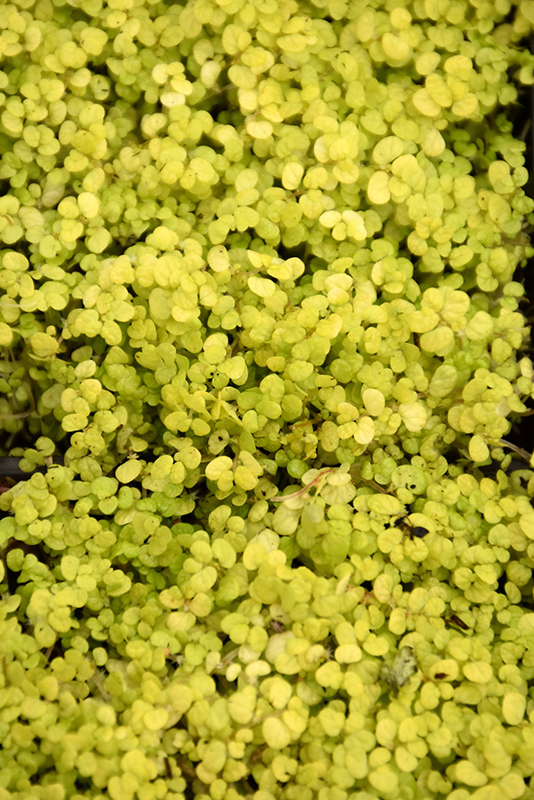Plant Finder
Golden Baby's Tears
Soleirolia soleirolii 'Aurea'
Height: 1 inch
Spread: 24 inches
Sunlight:
![]()
![]()
Other Names: Yellow Baby's Tears, Angel Tears
Description:
Tiny golden-chartreuse leaves on a spreading, very low, prostrate habit; a great groundcover that will light up a shade to semi shade area; ideal for basing containers and terrariums and is used in bonsai; likes even moisture and good drainage
Features & Attributes
Golden Baby's Tears is primarily valued in the home for its broadly spreading habit of growth. It attractive tiny round leaves emerge yellow, turning gold in color with hints of chartreuse throughout the year.
This is a dense herbaceous evergreen houseplant with a spreading, ground-hugging habit of growth. Its extremely fine and delicate texture is quite ornamental and should be used to full effect. This plant may benefit from an occasional pruning to look its best.
Planting & Growing
When grown indoors, Golden Baby's Tears can be expected to grow to be only 1 inch tall at maturity, with a spread of 24 inches. It grows at a medium rate, and under ideal conditions can be expected to live for approximately 10 years. This houseplant performs well in both bright or indirect sunlight and strong artificial light, and can therefore be situated in almost any well-lit room or location. It requires an evenly moist well-drained soil for optimal growth, but will suffer if left to grow in standing water. The surface of the soil shouldn't be allowed to dry out completely, and so you should expect to water this plant once and possibly even twice each week. Be aware that your particular watering schedule may vary depending on its location in the room, the pot size, plant size and other conditions; if in doubt, ask one of our experts in the store for advice. It is not particular as to soil pH, but grows best in rich soil. Contact the store for specific recommendations on pre-mixed potting soil for this plant.
There are many factors that will affect the ultimate height, spread and overall performance of a plant when grown indoors; among them, the size of the pot it's growing in, the amount of light it receives, watering frequency, the pruning regimen and repotting schedule. Use the information described here as a guideline only; individual performance can and will vary. Please contact the store to speak with one of our experts if you are interested in further details concerning recommendations on pot size, watering, pruning, repotting, etc.




